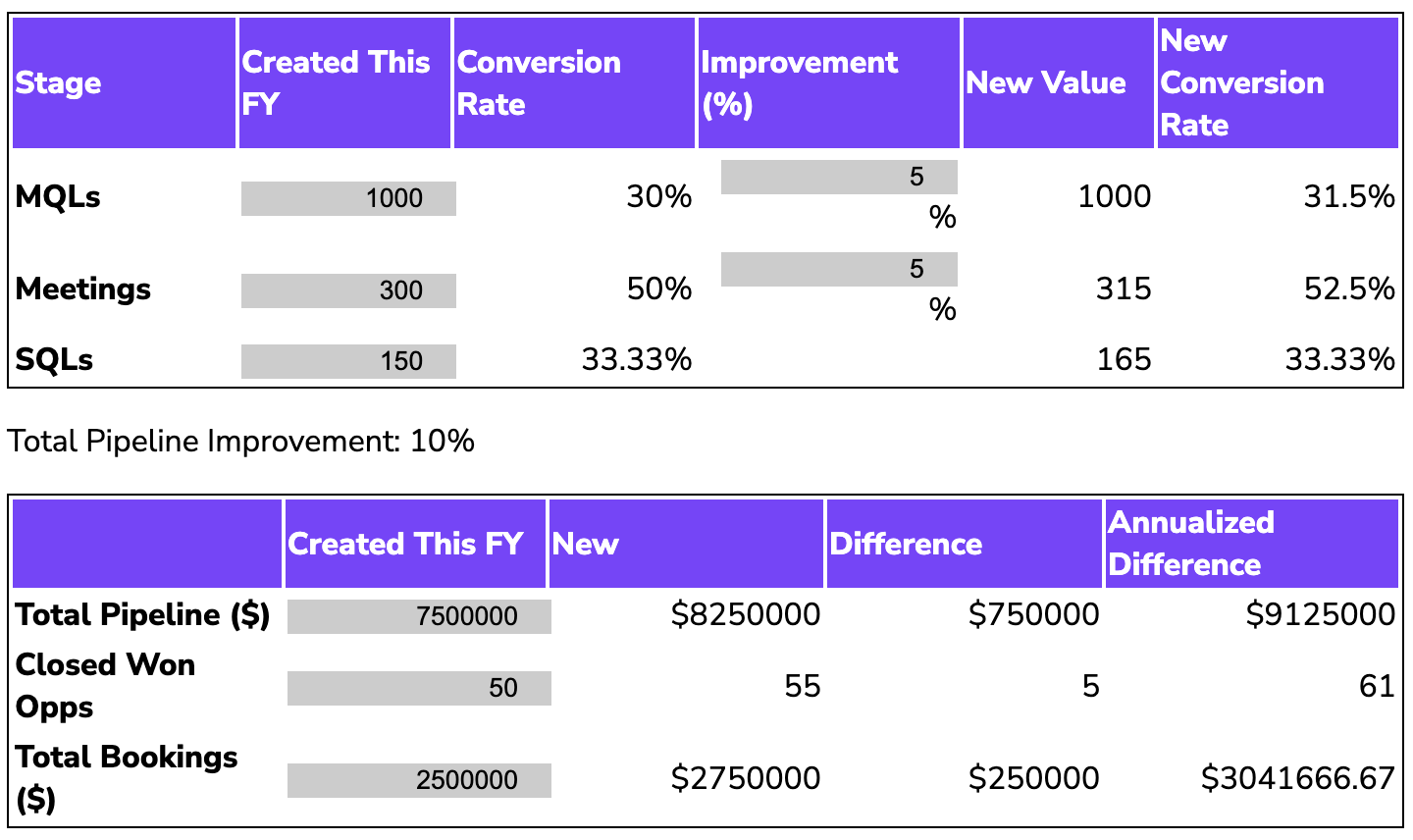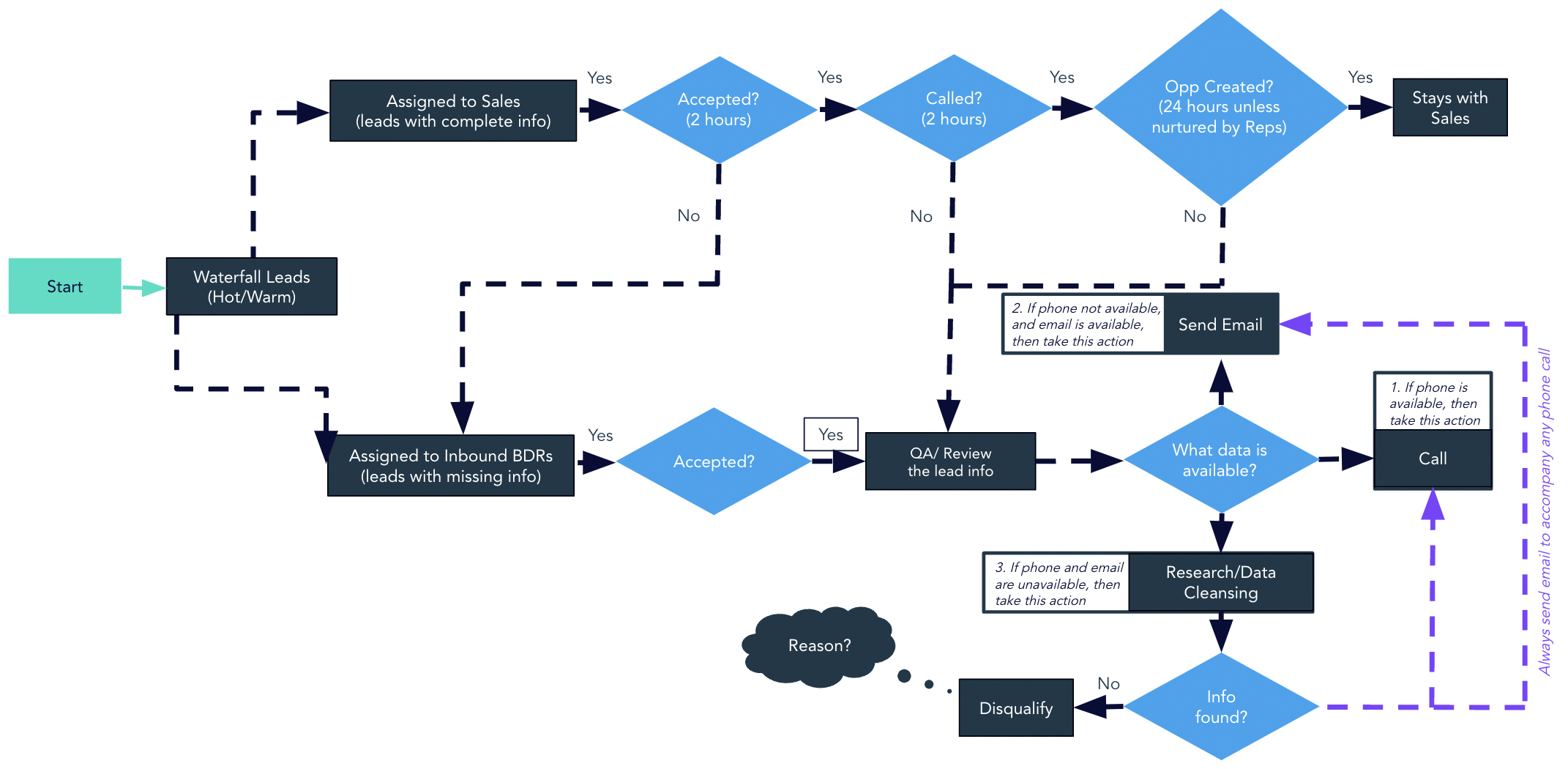The most disrupted functions of the revenue model during the pandemic were Inside Sales teams and BDRs. These reps need a lot of coaching and roleplaying, but no one works side-by-side anymore. ❌ Friendly competition is a major motivator, but digital camaraderie is an oxymoron. ❌ And of course reps are “smiling and dialing” to office phone numbers that no one answers. ❌ To navigate these changes, we’re interviewing sales leaders about how their BDR playbooks have changed.
>> Related: What We’ve Learned Managing Outsourced BDRs <<
Grace Tyson is a former Sales VP and now consults early-stage startups. In this interview, she shares how to interview, promote, and retain remote BDRs.
In this post:
Q: How did the pandemic permanently change BDR (or LDR, SDR, MDR etc.) functions?
Grace: When I started my Sales career as a BDR, I was in a classic “sales pit”. There was a lot of learning by osmosis, interacting with other sales reps, and a lot of eavesdropping. You could hear what’s working, what’s not working, and quickly debrief on conversations you have. It was motivating, dynamic, and supportive. And I learned quickly.
It’s a hard job. I really have so much respect for BDRs. Now with teams shifting so heavily to remote, it’s especially challenging for BDRs (and their leaders) to have grit, resilience, and accountability. Truly it’s hard for me to imagine sitting at home on my couch, making those calls. It’s easy for remote BDRs to feel disconnected from both the team and their goals.
Q: What’s working among teams that retain remote BDRs?
Grace: It’s simple, but a daily cadence of team huddles is key. So is using tools like Chorus and Gong, so teams can listen to calls together, give feedback, and improve.
Reps also need to feel like they’re in a sales environment. That includes motivating the team through SPIFs (sales performance incentive funds), goal setting, and a really lively Slack channel.
Compensation also really matters. Do you incentivize and compensate them for simply booking meetings? Or do prospects need to enter the funnel for BDRs to be compensated? Do BDRs get any compensation based on closed revenue? I’m a fan of compensating BDRs based on the work they’ve done, because they can’t control the outcome of the whole sales process. I like to keep that very simple.
Q: What qualities do you look for in a BDR candidate?
Grace: Well, first I frame the role and expectations appropriately. It is a really hard role. So, when interviewing and hiring for the BDR role, I like to go negative about the role. I describe the nitty gritty. Otherwise BDRs will quickly drop out. If they still want the job after I set low expectations, it’s a good sign.
Then I look for grit – can they handle rejection and pick themselves back up? I want to hear about experiences of putting yourself out there and failing and then going forward again.
I also look for coachability. Are they humble and hungry and want to learn? Can they take and implement feedback? There is a big difference. So, I always include some sort of role play in the interview. Then I say, “Hey, do that little part again with this in mind?” Sales people are notorious BS-ers! They can seem really great in the interview, so I always test them in action.
Q: Are there any other exercises you include in a BDR interview?
Grace: I like to brief them on target personas and ICP. Then I ask them to find three companies to reach out to, and three people at those companies.
I also ask them to write sample prospecting emails, and we do a cold call role play too. I’m not looking for a perfect email. Instead, I want to workshop it, and see if they can implement my feedback in a second draft. I’m not taking bets on people.
Q: How do you measure BDR activity?
Grace: Atrium is amazing for tracking BDR metrics, and seeing how cohorts of BDRs are ramping. I’m a big fan of Outreach to track activities and conversion rates. If you are best friends with Sales Ops, you won’t have blind spots.
And then also the emotional question of “how are you doing?” How is this feeling sitting alone in your house making these cold calls? Because it can be quite discouraging. The activity may be there, but the rep is very unhappy and ready to jump. BDR jobs without camaraderie are a recipe for turnover.
Q: How do you prevent “activity for the sake of activity” and meetings that don’t go anywhere?
Grace: If they’re not booking meetings that convert to revenue, they won’t be successful in an AE role. Full stop. And BDRs need a clear promotion path to Sales (or Customer Success or SEs, etc.). That’s the carrot that drives quality.
Within six months, BDRs want a path out! I’m explicit that they can’t move up unless they deliver quality meetings. Right away they start attending discovery calls with the AE. They ensure the prospect shows up. They get feedback if it’s a good/bad meeting, and refine their approach. And they start caring about the revenue outcome, and not just the activity counts.
Q: Among a pool of BDRs, how do you select who you’ll promote to AE?
Grace: I only consider top performers… those that consistently meet and exceed their goals.
- Then I look down funnel… How many Opportunities did they source or influence? How are their meetings contributing to revenue?
- Then I test if they can articulate how to navigate an org. Are they taking insights from one person and helping the AE go wide?
- And then of course there’s temperament. Are they thoughtful, coachable, humble, and gritty? Are they a leader?
Q: Is there a sweet spot, in terms of timeline, for promoting BDRs to AEs?
Grace: Well 6 months is too fast! Transitioning from a BDR to an AE is tough… it’s a mental shift of “quick wins” to slower, more strategic progress. When you’re a BDR, it’s a successful day if you book a meeting or two. It’s a really short window from effort to outcome.
Then, when you become an AE, the sales cycle is usually 30+ days (and often 6-12+ months). That can be very discouraging, and BDRs can feel confused while they shift from instant gratification to delayed gratification. It’s also a more complex relationship compared to cold calls. AEs are generating pipeline, doing deep discovery, uncovering pain, showing product, storytelling, sharing value, navigating multiple stakeholders, going wide… it’s tough!
Q: How long does it take newly promoted BDRs to ramp to full quota?
Grace: I’ve seen organizations give BDRs a shorter ramp than external hires because they think, “well, you already know the product, the ICP, and how to prospect.” I think that’s a mistake. If anything, they often need a longer ramp or a transitional role, where they’re working shorter sales cycles and smaller deals.
Of course, it depends on the sales cycle and the average selling price, but I would say in general, within six months they need to start performing. A 2–3-month ramp period to full quota is setting them up for failure.
Q: Do you have any final advice to companies building remote Sales teams for the first time?
Grace: Yes a few:
- Don’t overcomplicate comp plans. BDRs need to easily calculate their take-home pay to stay motivated. Compensate on quantity, but promote on quality.
- Prioritize coaching for both the BDR and AE teams. It can feel impossible to make time for coaching, but it’s truly impossible to succeed if you don’t. You simply have to listen to calls with the rep, give them guidance, and role play.
- And set promotion expectations conservatively. Don’t tell a BDR they’ll be an AE in 6 months if it’s really 18 months.
Want tips, tutorials, best practices, and other cool stuff delivered to your inbox? Subscribe to the quarterly Sponge newsletter >




